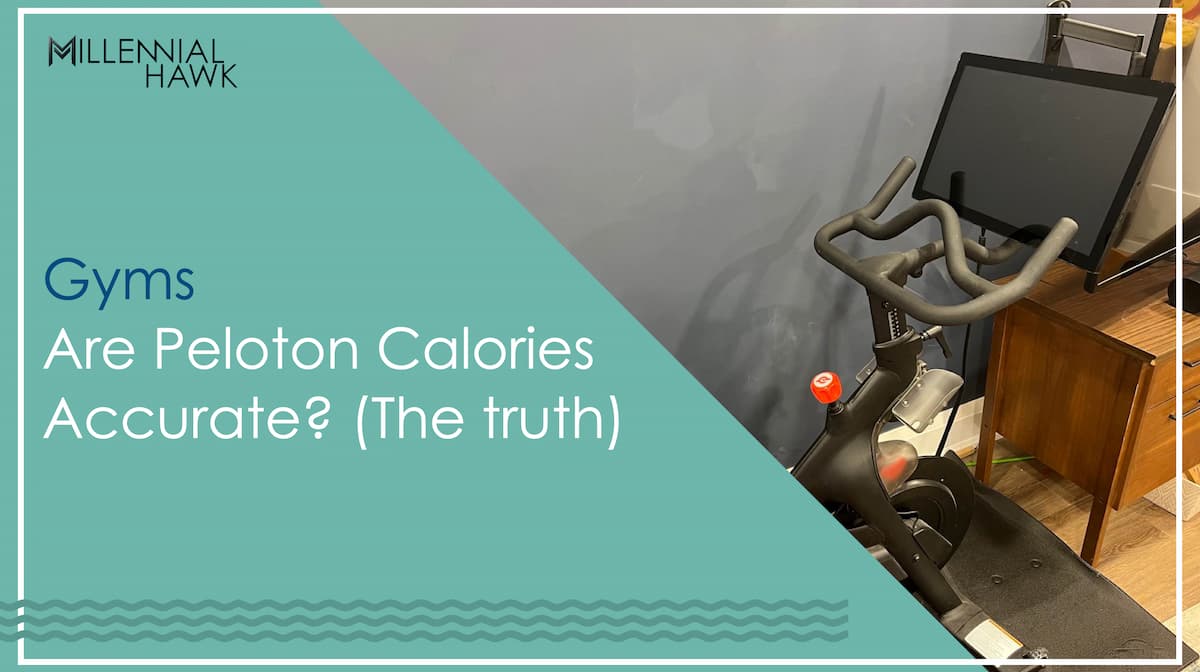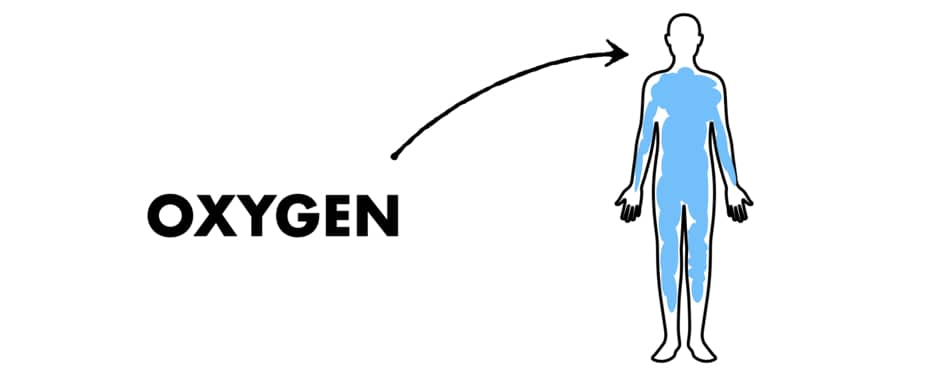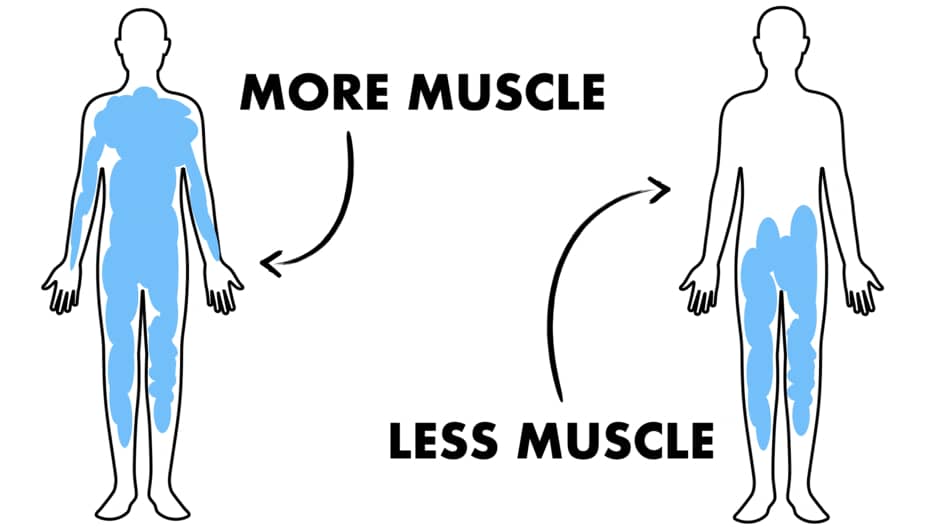No, Peloton calorie calculations are not entirely accurate as they rely on the MET method, which can result in discrepancies as high as 35-59% in some cases. Adjustments for factors like body weight, age, gender, and height are necessary, and outdated user profile data can lead to inaccuracies.
So, are Peloton calories accurate? No, the METs value, equating 1 MET to 3.5 ml/kg/min, is based on the resting oxygen consumption of a 70-kg, 40-year-old man, leading to discrepancies, while energy expenditure measured from heart rate monitors can be off by 9-43%.
I’ve used Peloton for a while and I’ve noticed a big discrepancy between calories burned on the Peloton app vs on my heart rate monitor. The peloton bike uses the built-in output meter to measure the watts, and based on that it calculates the number of calories burned. However, this formula isn’t accurate because it doesn’t take into consideration resting metabolic rate and lean body mass.
In this article, I will explain how accurate Peloton’s calorie calculations are, how Peloton calculates calories, discuss the accuracy of Peloton’s calorie burn estimates, and provide a simple Peloton calorie calculator.

How can you determine the number of calories you burn during a Peloton class?
The most accurate way to know how many calories you burn during Peloton class is to measure the amount of oxygen consumed. There are a couple of ways that give you accurate numbers: indirect calorimetry and direct calorimetry.
While both of those methods are excellent ways to measure oxygen consumption and energy expenditure, neither method is practical for everyday use because they require expensive and hard-to-access equipment (more on that later). Thankfully, there are three more ways to estimate energy expenditure during Peloton workouts, but those are way less accurate.
- Metabolic equivalent
- Heart rate monitoring
- Motion sensors
How Does Peloton Bike Calculate Calories?
The Peloton Bike calculates calories using the metabolic equivalent method (METs), where one MET equals 3.5 mL of oxygen consumed per kilogram of body weight per minute. This method is based on the power output of the bike and measures your effort level in watts, which is determined by resistance, cadence, and power output.
The Peloton bike then automatically calculates calories burned based on the effort level, but it’s important to note that this calculation may not be entirely accurate as it doesn’t consider factors like lean body weight and fat percentage.
Here’s how it works.
The body consumes oxygen, and the more oxygen we consume, the more energy (calories) we need to transport this oxygen throughout the body. Additionally, with more physical effort, the body has a higher demand for oxygen and a greater need to eliminate carbon dioxide.

The effort level on the Peloton bike is measured in watts, which is a combination of resistance, cadence, and power output. The number of watts corresponds to different METs values, and the bike automatically calculates this number based on the level of effort you exert during your training.
This table provides an example of the conversion of Peloton intensity (watts) to METs.
| Peloton intensity | METs |
|---|---|
| 30 – 50 watts | 3.5 |
| 51 – 89 watts | 4.8 |
| 90 – 100 watts | 6.8 |
| 101 – 160 watts | 8.8 |
| 161 – 200 watts | 11 |
| 201 – 270 watts | 14 |
METs and watts are widely used and accepted across most fitness machines and gym equipment as methods for measuring intensity and energy expenditure. This means that many of the fitness machines you encounter in the commercial gym can display the number of calories you burn based on a built-in output meter that converts this information into METs. Now, when it comes to Peloton, the approach is not so different. Here is the formula that shows how the Peloton calculates calories.
Calories burned per min = MET x body weight (Kg) x 3.5 ÷ 200
To ensure that your Peloton calorie estimate is more accurate and specific to you, as you can see, the formula needs to be adjusted for body weight. That’s why updating your profile on the Peloton bike is important because the bike uses those numbers to calibrate your calories. By keeping the numbers up to date, the Peloton will be able to provide a better estimate of energy expenditure.
However, even after updating and calibrating your profile, this measure has many limitations because it doesn’t take into consideration other important factors such as lean body weight and body fat percentage.
Does calibrating the Peloton bike help improve calorie accuracy?
Yes, Peloton calibration is crucial for improving calorie accuracy because it ensures that the power output measurements are as precise as possible, which directly impacts calorie calculations.
How accurate are Peloton calories?
The accuracy of Peloton calories calculated using the METs formula is a topic of concern. The formula, equating 1 MET to 3.5 ml/kg/min, is derived from the resting oxygen consumption of a specific individual, a 70-kg, 40-year-old man. However, a study conducted by Dr. Nuala M Byrne and her team at the Queensland University of Technology found that this formula doesn’t account for individual variations in factors like lean body mass and resting metabolic rate.
Their research, published in the Journal of Applied Physiology in 2005, analyzed data from 642 women and 127 men, aged 18 to 74, with varying weights. The study revealed that the 1-MET value of 3.5 ml O2 x kg(-1) x min(-1) overestimates resting oxygen consumption by an average of 35%. This discrepancy raises questions about the accuracy of calorie calculations based solely on METs, emphasizing the importance of considering individual factors for more precise estimations of energy expenditure during Peloton workouts.
The accuracy of the METs formula used by Peloton for calorie calculations is further compromised by its failure to consider the impact of lean body mass on resting metabolic rate (RMR). Lean muscle mass significantly contributes to a higher RMR because muscles are metabolically active even at rest, consuming oxygen at an elevated rate. This simple diagram shows the difference in oxygen consumption between people with higher and lower lean muscle mass. As you can imagine, the more oxygen one consumes, the more calories one burns at rest.

How Accurate Are Peloton Calories compared to other fitness trackers?
The calorie estimates on the Peloton bike tend to be higher compared to fitness trackers like the Garmin watch. This variation occurs because Peloton uses a power meter to estimate energy expenditure, while the watch relies on a heart rate monitor. However, accuracy can also depend on individual factors, and it’s essential to regularly update your Peloton profile for more precise calorie data.
Since I got the Peloton, I was shocked at how many calories people burn on it. To assess the accuracy of Peloton’s calorie estimates, I conducted an experiment where I compared the total calories burned on the bike to the calories burned measured by my Garmin watch. In this experiment, I completed 5 classes ranging from 20 to 75 minutes, and here are the results.
| Peloton workouts | Peloton calories | Garmin calories |
|---|---|---|
| 30-minutes Low-impact Ride | 348 | 278 |
| 30-minutes Power Zone Max Ride | 567 | 452 |
| 75-minute Power Zone Endurance Ride | 970 | 823 |
| 45-minute Rock Ride | 616 | 575 |
| 45-minute Low-impact Ride | 467 | 397 |
As you can see, the Peloton bike consistently provided me with higher calorie estimates compared to the Garmin watch. This difference can be attributed to the fact that the Peloton bike uses a power meter to estimate energy expenditure, while the watch relies on a heart rate monitor.
If you’ve ever wondered why your Peloton reports higher calorie burn compared to your Fitbit or Apple Watch, it’s likely due to the Peloton’s formula, which considers factors like your body weight, age, gender, and height. To improve the accuracy of your calorie tracking, make sure to keep your Peloton profile updated with the most accurate information. This will help align the Peloton’s estimates with other fitness trackers.
How accurate is the Peloton heart rate monitor for tracking calories?
The Peloton heart rate monitor is effective for measuring heart rate, but it may not provide the most accurate estimate of calories burned. Factors like heat, hydration, lack of sleep, stress, caffeine, nicotine, and certain medications can influence heart rate, leading to potential inaccuracies in calorie estimates.
- Heat: Exercising in a humid or hot place will lead to increased resting heart rate.
- Dehydration: Dehydration can result in reduced blood volume, leading to a faster heartbeat and higher heart rate during your Peloton workout.
- Lack of sleep: Insufficient sleep and abrupt awakenings may contribute to an increased heart rate while using Peloton.
- Stress: Stress during your Peloton session can trigger the release of adrenaline, causing a temporary rise in heart rate and blood pressure.
- Caffeine: Consuming caffeine before your Peloton workout can boost adrenaline levels and mildly elevate your heart rate.
- Pre-workouts: Pre-workout supplements often contain caffeine and taurine, which can affect your heart rate during Peloton exercises.
- Nicotine: A single 4 mg dose of nicotine has been found to decrease heart rate variability in healthy nonsmokers, indicating a proportional decrease in high-frequency variability and reduced vagal activity (Sjoberg & Saint, 2011).
- Medications: Some medications may influence your heart rate while using Peloton, so it’s important to be aware of their potential effects.
As you can see, a higher heart rate doesn’t necessarily correlate with burning more calories during your Peloton workout. Now, let’s consider a scenario: if I’ve had a restless night’s sleep and compensated by consuming coffee and pre-workout before my Peloton ride, my heart rate may skyrocket, but this doesn’t indicate more calories burned.
The Peloton heart rate monitor is indeed an effective tool for tracking heart rate, but it’s essential to note that heart rate alone is not the most accurate method for estimating calorie burn. Anything that influences your heart rate unrelated to your workout can provide misleading feedback to the heart rate monitor, potentially leading to overestimation or underestimation of your total calories burned.
Numerous studies, such as one published in PLoS One in May 2016 by Matthew P. Wallen at the University of Queensland, have shown that estimates of energy expenditure measured by heart rate monitors can vary significantly, with inaccuracies ranging from 9% to 43%. These findings highlight the limitations of relying solely on heart rate-based calorie estimates, particularly for those using such data for weight management purposes.
The type of heart rate monitor you choose matters when it comes to Peloton. Optical heart rate monitors have shown lower accuracy when compared to ECG heart rate monitors. Therefore, the best heart rate monitor for Peloton would be a chest strap rather than a wristwatch.
While the Peloton bike may not provide the most accurate calorie measurements, it’s still crucial to track them. Monitoring calories is just one way to gauge progress, alongside metrics such as power output, mileage, and class difficulty.
How to Track Calories With Peloton?
To track calories with Peloton, follow these seven steps:
- Monitor calories burned: Keep an eye on your total calories burned over the week and aim to beat your previous week’s record.
- Track miles or kilometers: If you’re training for an endurance event, monitor the distance you cover each week and gradually increase your training volume.
- Measure power output: Utilize the power meter to gauge exercise intensity and ensure you’re riding within your desired power zone for performance training.
- Count sessions: Implement progressive overload by adding more workout sessions each week.
- Utilize Peloton metrics: If you use a Peloton bike, the metrics are automatically saved for you. However, for Peloton Digital users, manual tracking is required.
- Record calories burned: After each Peloton class, jot down the number of calories burned. You can create a log on a spreadsheet or Google Docs to tally your weekly totals automatically.
- Be cautious with calorie intake: Avoid using Peloton or Apple Watch calorie estimates as the sole determinant for calorie intake, as they may not be entirely accurate. Instead, focus on performance metrics and consider consulting a local lab for precise calorie expenditure measurements through indirect calorimetry.
One common recommendation I give to all of my clients is to track as many indicators as you can that show you’re making progress. This is important because it allows you to stay focused and have a reference of how much you’ve achieved so far.
Why do Peloton and Apple Watch show different calorie counts?
Peloton and Apple Watch often display different calorie counts due to their distinct methods of estimating energy expenditure. Peloton relies on a built-in wattage meter, which calculates calories based on your power output during workouts. In contrast, the Apple Watch utilizes a heart rate monitor to estimate calorie burn. These differing approaches can lead to variations in calorie counts between the two devices.
Which is more accurate for calorie tracking: Apple Watch or Peloton?
Overall, the Apple Watch tends to be more accurate than the Peloton bike for calorie tracking because it relies on heart rate monitoring, which is more precise than the Peloton’s metabolic equivalent method. However, it’s important to note that no single method, including both the Apple Watch and Peloton, can provide the same level of accuracy as direct and indirect calorimetry, which are typically conducted in laboratory settings with specialized equipment.
What is the average number of calories burned during a Peloton workout?
The average number of calories burned during a Peloton workout can vary based on factors such as the type of workout and its intensity. On average, a 20-minute Peloton ride can result in burning between 300 to 600 calories, depending on the specific class and how vigorously you engage in it. Classes that involve high-intensity interval training, climbing, or riding out of the saddle tend to burn more calories.
Which Peloton classes burn the most calories?
The Peloton classes that burn the most calories are the longer rides, especially the 90-minute Power Zone endurance rides. These sessions involve sustained high-intensity effort, making them effective for calorie expenditure.

This is an excellent article, well set out and clear. I’m fairly new to Peloton but have been puzzled why the calories data on it are consistently higher than those obtained using a Garmin wrist watch and, more recently, a Fitbit Sense. Naively I assumed as it it measuring actual output (in Watts) it must be more accurate than a wristwatch but now I understand why this isn’t so.
Interesting to note that as one loses weight (as I have been doing, very successfully) the same exercise will burn fewer calories, which may help explain why it can be more and more difficult to shed one more pound (or kilo).
Thanks for the really useful information.